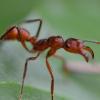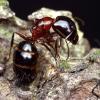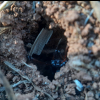C. novaeboracensis if found throughout North America, it's distribution seems sporadic though and it appears to primarily be a woodland species. It's range might be tied more to it's habitat preferences then geography or climate. I wouldn't be surprised if this was C. novaeboracensis (especially given where it's found) but I don't think it can be confirmed outside of using an ID key.
- Formiculture.com
- Forums
- Gallery
- Members
- Member Map
- Chat























